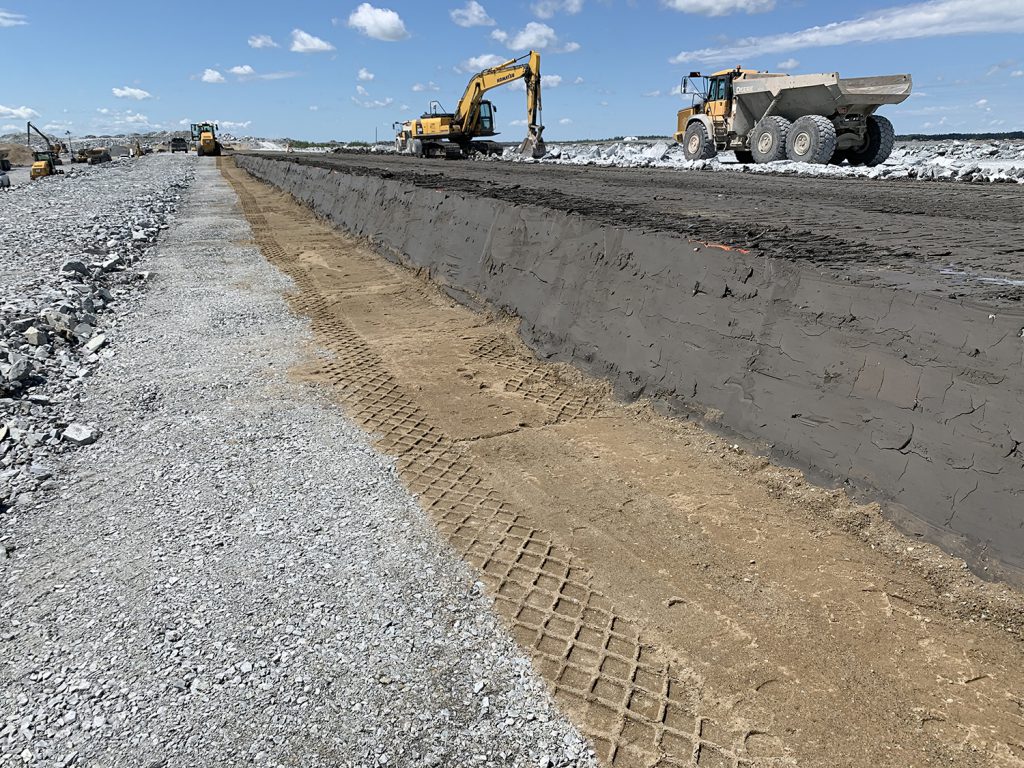The Capital Projects team at Rainy River is excited to kick off the 2021 Stage 3 dam raise at our Tailings Management Area (TMA). The TMA is an integral part of the operation and is required to be raised yearly to maintain milling operations throughout the mine life. This years’ dam raise will involve raising the dam 1.2 metres in elevation, over a distance of 7.2 kilometres, involving New Gold self-perform construction team, as well as external contractors. This dam raise requires placement of roughly 4.4 million tonnes of material in accordance to strict specifications to ensure dam stability. Third party consultants provide quality assurance on the placed material during construction to ensure the specifications are being maintained. Hundreds of pieces of instrumentation have been installed throughout the dam over the past 6 years and are being monitored daily. The daily monitoring is used to measure the dam’s performance, ensuring public and environmental safety. Routine inspections of the dam are also carried out by both internal and external groups to ensure the dam is performing as designed.
The post Tailings Management Area South Dam Raise first appeared on Rainy River Mine.
